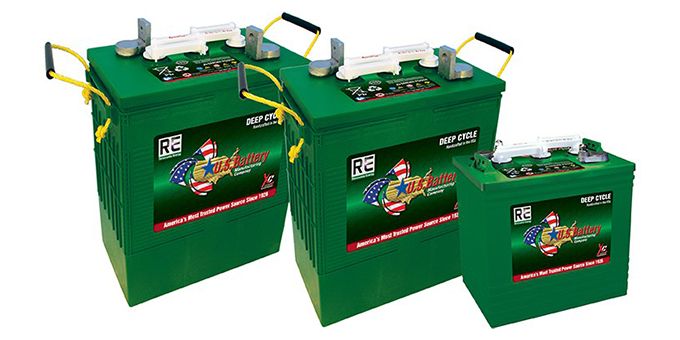With stay-at-home orders in place in many states, homes utilizing deep-cycle batteries for power could be increasingly straining their systems. As more people stay home, more appliances and electrical accessories that would typically be off during the day will be used.
 Maintaining Solar Deep-Cycle Batteries During Self Quarantine and Stay-At-Home Orders
Maintaining Solar Deep-Cycle Batteries During Self Quarantine and Stay-At-Home Orders

Mike Wallace | US Battery Mfg. Co.
To avoid putting additional strain on your battery storage system, there are several ways you can keep deep-cycle batteries in good working order.
- Minimize your battery-packs depth-of-discharge (DOD) to no more than 50 percent. Draining past 50 percent DOD will ultimately shorten the lifespan of your battery pack. If possible, schedule times during the day when certain non-essential items can be turned off. This will help minimize the total discharge.
- If your home is plugged into the electrical grid. Use this opportunity to charge your deep-cycle battery pack to keep them from discharging below 50 percent.
- Perform an equalization charge. Equalization charging prevents the build-up of sulfates on the battery plates that can reduce capacity. The batteries should be fully charged before any equalization charge is added.
- Check water levels on flooded lead-acid deep-cycle batteries. Make sure the batteries are fully charged first, then add water as necessary to fill each cell, ensuring the plates are fully submerged.
- Keep your battery area clean and check for corrosion and proper battery connections. Check the cables to ensure they are tight. Remove any corrosion with a mixture of water and baking soda.
- Double-check charging rates during cold temperatures. Flooded lead-acid batteries charge and discharge differently in cold and hot temperatures. During winter months, it may take longer for batteries to recharge. The best way to ensure the batteries are fully charged and not dipping below 50-percent DOD is to use a hydrometer to measure the specific gravity of each battery cell.
Battery manufacturers recommend using a simple correction factor to your hydrometer’s readings. Using 80-degrees as your baseline, subtract (.004) from your hydrometer reading for every 10-degrees below 80 °F (5.6-degrees below 27 °C). For example, if the temperature of the electrolyte is 50 °F and your battery specific gravity reading is 1.200, you must subtract .012 from your measurement. In this case, .004 for every 10-degrees equals .012. Subtract this from 1.200, and your corrected specific gravity reading is 1.188.
Paying closer attention to your renewable energy system’s deep-cycle batteries will ensure they will remain reliable and get you through what could be several weeks or months of having to stay indoors during this outbreak.
The content & opinions in this article are the author’s and do not necessarily represent the views of AltEnergyMag

US Battery
Since 1926, we have been designing and manufacturing the highest quality deep cycle batteries in the world. Starting out as a small manufacturing operation in San Diego, California and growing to the global company that you see today, having locations in Corona, California, Evans, Georgia and Augusta, Georgia, we work each day to supply our customers with the best batteries available. Through innovation and technology our products are the go-to energy storage batteries for a variety of applications including: scissor lifts, sweeper/scrubbers, golf carts, boats, RVs, renewable energy, and many other industries that require the constant energy delivered by quality deep-cycle batteries.
Other Articles
Lithium Batteries for Renewable Energy Applications
The Truth About Reviving Dead Batteries
Battery Recycling Can Lead to a Better Future for Energy Resources
More about US Battery
Comments (0)
This post does not have any comments. Be the first to leave a comment below.
Featured Product

